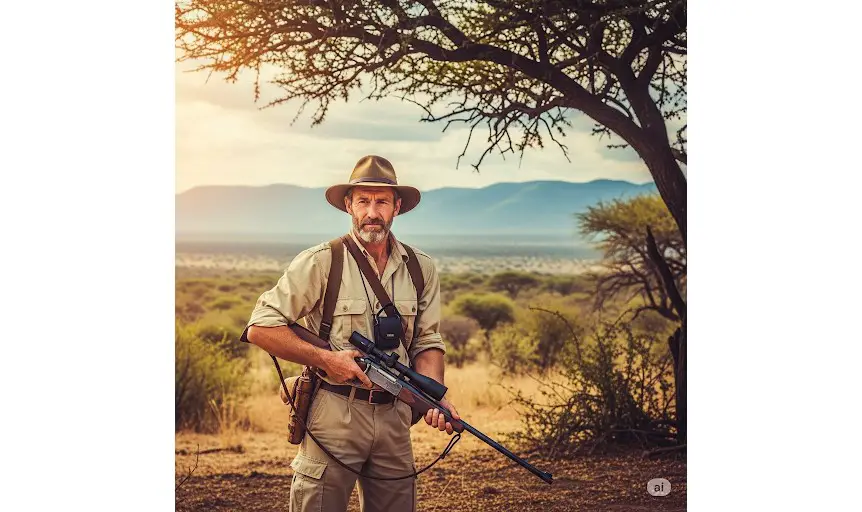
The Legacy and Practice of Big Game Hunting
Big Game Hunting has fascinated humanity for centuries. This age-old practice involves tracking and hunting large wild animals. Although it often stirs controversy, the sport’s origins, global presence, and evolving significance provide valuable insights into its role in human history and culture.
The Origin and History of Big Game Hunting
Big Game Hunting dates back to prehistoric times when early humans relied on hunting for survival. Large animals such as mammoths, bison, and elk were essential for food, clothing, and tools. Over time, hunting evolved beyond necessity into a recreational pursuit for the elite. Ancient civilizations like Egypt and Mesopotamia celebrated hunting as a symbol of power and status.
In the Middle Ages, European aristocrats refined the practice. They established game reserves and employed specialized hunting techniques. The invention of firearms in the 16th century revolutionized hunting, making it more accessible and effective. By the 19th century, colonial explorers popularized Big Game Hunting in Africa and Asia, creating a legacy that continues today.
Global Popularity and Regions of Practice
Big Game Hunting is practiced on every continent except Antarctica. Africa remains the most iconic destination, attracting hunters with its “Big Five”: lions, leopards, elephants, rhinoceroses, and Cape buffalo. Countries like South Africa, Namibia, and Tanzania host numerous hunting safaris. These safaris generate significant revenue for local economies.
North America also has a rich hunting tradition. The United States and Canada offer diverse landscapes and game species, such as elk, moose, and grizzly bears. Alaska, Montana, and British Columbia are particularly popular among enthusiasts. In Europe, countries like Scotland, Spain, and Russia maintain hunting estates, often featuring deer, boar, and wolves.
Asia provides unique opportunities as well. Mongolia’s vast steppes attract hunters pursuing ibex and argali sheep. In Oceania, Australia and New Zealand offer wild boar and red stag hunting. Latin America contributes with species like jaguars and peccaries in regions like the Amazon and Patagonia.
Amateur Big Game Hunting: A Gateway for Enthusiasts
Amateur hunters form a significant part of the global Big Game Hunting community. This entry-level participation allows individuals to experience the sport without professional expertise. Local hunting clubs and conservation programs often facilitate such activities. These organizations provide safety training, ethical guidelines, and mentoring.
Youth engagement is a growing trend in many countries. In North America, hunting education is often integrated into school curricula. Programs teach wildlife conservation, firearm safety, and outdoor skills. Similarly, junior hunting leagues encourage family involvement, fostering intergenerational appreciation for nature and wildlife.
In Europe, organized hunts for amateurs often occur on managed estates. Participants learn under the guidance of seasoned hunters. Africa’s community-based conservancies also offer entry-level hunting experiences. These initiatives emphasize sustainable practices and benefit local communities.
Professional Leagues and Global Competitions
Big Game Hunting at a professional level involves organized leagues and competitions. Though less formal than mainstream sports, these leagues provide structured opportunities for seasoned hunters.
In the United States, the Boone and Crockett Club maintains records of hunting achievements. This organization promotes ethical hunting and conservation. Similarly, the Safari Club International (SCI) hosts annual conventions and awards ceremonies. These events celebrate hunters’ accomplishments and foster networking.
Africa’s professional hunting scene includes guided safaris led by licensed professionals. These experts assist clients in tracking and harvesting game. Some countries require hunters to participate in regulated competitions. These events showcase skill and adherence to conservation principles.
Internationally, trophy hunting competitions draw participants from around the globe. These events prioritize ethical practices and often contribute to conservation funding. Professional leagues ensure that hunting remains a controlled and sustainable activity.
The Political and Social Significance of Big Game Hunting
Big Game Hunting carries immense political and social implications. Conservation programs funded by hunting revenue play a vital role in protecting ecosystems. For example, hunting licenses and fees contribute to wildlife management and anti-poaching efforts.
The sport also sparks debates over ethics and animal rights. Advocates argue that regulated hunting supports biodiversity and local communities. Opponents, however, criticize the killing of endangered species and the commodification of wildlife. These discussions often influence international policies and legislation.
Socially, hunting fosters community and cultural traditions. Indigenous practices in regions like Africa and North America highlight the spiritual and ceremonial aspects of the sport. Additionally, hunting brings together individuals from diverse backgrounds, promoting shared experiences and understanding.
Rules and Ethics in Big Game Hunting
The rules of Big Game Hunting vary by region and species but share common principles. Ethical guidelines prioritize respect for wildlife, conservation, and safety.
Firstly, hunters must obtain proper licensing and permits. These documents ensure compliance with local regulations and quotas. Governments often set strict limits on species and numbers to protect populations.
Secondly, hunters are required to use approved equipment and techniques. Firearms and ammunition must meet legal specifications. Some regions also permit traditional methods like bow hunting.
Thirdly, hunting seasons are designated to align with wildlife breeding cycles. This ensures that populations remain stable. Hunters must also adhere to property boundaries and avoid illegal poaching.
Conservation organizations promote a code of ethics emphasizing fair chase and humane practices. Hunters are encouraged to minimize suffering and harvest game responsibly. Education programs reinforce these values, ensuring future generations respect the sport.
Conclusion
Big Game Hunting remains a multifaceted and influential activity. Its origins in survival, transformation into recreation, and current global presence highlight its cultural significance. Whether through amateur participation or professional leagues, the sport connects individuals to nature and conservation. Although controversial, Big Game Hunting continues to shape political, social, and environmental landscapes worldwide. Understanding its history, practices, and ethics is essential for appreciating its complex role in human society.




